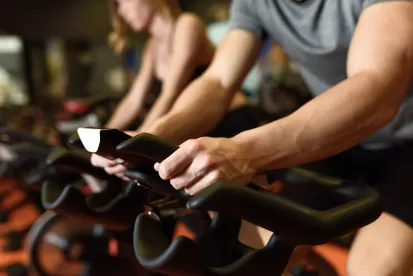On Sunday the International Association of Athletics Federations (IAAF) released 38 reports as part of the largest ever biomechanics study in athletics. For those who haven’t heard of this term before, biomechanics is essentially ‘the physics of sports’. It is the science of analysing human movement and examples include analysing how a swimmer’s hand positioning affects their propulsion or how a tennis player’s positioning affects the strength of their shot. At sport’s highest levels where milliseconds and millimetres can determine who is a medallist, this area of research should enable athletes to perfect finer details and improve overall performance. Biomechanics reflects the rise in the use of technology and athlete data we are seeing throughout various sports.
Alongside the thousands of spectators present at last year’s IAAF World Championships in London were 49 high speed and HD cameras. Their recordings were analysed by the IAAF in partnership with Leeds Beckett University. In their results, the reports evaluate the movements of the world’s top athletes such as Usain Bolt, Mo Farah and Allyson Felix. Taking the Men’s 100m report by way of example, it goes into meticulous detail down to measuring the angles at which various parts of the eight finalists’ bodies were positioned at touchdown and toe off (i.e. when their foot was in contact with the ground and when that same foot was in the air). The detail can seen in the figures below.
More somewhat digestible data was produced, for example, athletes’ mean speed over each 10-metre split and their mean step length over 100 metres. From this, athletes and coaches can gain a useful insight into the movements of the world’s best athletes, and competitors can try to replicate the same biomechanical movements in their events to improve their performance.
In addition to the performance benefits of such data, it can also be used to help reduce injury. Although the reports were not produced to comment on medical considerations, the Men’s 100m report highlights Bolt’s asymmetry as his left foot was in contact with the ground for a notably longer period of time than his right. Bolt’s left leg has caused concern during his athletic career and the report suggests such asymmetry may be a contributing factor.
Growth of data analysis in sport
Biomechanics is a recent addition to the growing use of data in sport, used to improve the performance of athletes.
The significance of data analysis became obvious in football in 2015 when the International Football Association Board allowed wearable technology in football, in particular, electronic performance and tracking systems (EPTS). Such devices have now become commonplace not only during training but also in official matches, including the FIFA World Cup.
However processing such data is likely to see legal challenges in the very near future. Following the implementation of the General Data Protection Regulation (GDPR) on 25 May 2018, to the extent such data is personal data, it is now subject to new data protection rules.
For example, the data collected by football clubs via EPTS will be personal data if it relates to an identified or identifiable individual. This may be as simple as a name being linked to statistics such as distance covered. Clubs will need a lawful basis for processing such data. Of the six lawful bases available, it is questionable whether a club can rely on consent as the club/player relationship is similar to the employer/employee relationship. Under the GDPR, where there is an imbalance of power between the parties, consent may not be deemed to be valid as, for example, the employee may face termination by the employer if they refuse consent. Clubs may need to rely on a legitimate interest instead.
Once clubs or governing bodies have established their legal ability to process such data, further questions will need to have been considered to produce their relevant policies and notices. For example, who owns such data? How much of this data can a player take with them when transferred? What happens if the data gets into the wrong hands? How securely is the data kept?
Data on players and athletes is valuable and it may be used for a number of reasons. For example, used against players in negotiations on their transfer, used to enhance performance or used to reduce the risk of injury. With the development of technology, data analysis will inevitably become more advanced. Yet as the area of law is in its infancy, it will be interesting to see how it develops within the sports industry.



 />i
/>i

